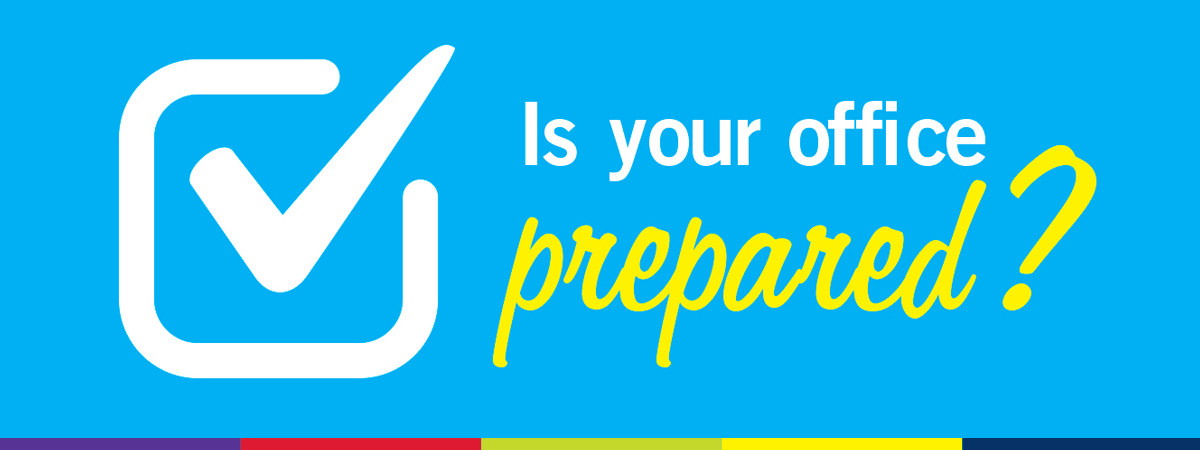
ADMINISTRATIVE:
- Review infection control protocol with the entire practice staff to ensure everyone understands and that they can implement it seamlessly when practice begins seeing more patients
- Notify patients when you anticipate re-opening & of new practice protocols for health and safety
- Call patients before their scheduled appointment to screen for symptoms or respiratory illness or travel to “hot spots” over the phone
- If the patient is showing signs of respiratory illness or has traveled to a “hot spot” recently, reschedule the appointment and work with medical providers to find appropriate testing if necessary
- Have a non-contact thermometer at the office to screen staff and patient temperatures upon entering the office
- Have hand sanitizer available for patients to use upon entering and exiting the office
- Appoint someone to regularly disinfect high contact areas of the office (door handles, reception desk etc.) throughout the day
- Utilize additional barriers and PPE as recommended by the federal, state and local guidelines
- Be prepared to answer patient questions and share with them what you are doing to ensure they are safe
CLINICAL:
General
- Review any new recommendations or standards that may be required for dental practices
- Review manufacturer IFUs for all equipment to ensure proper protocols are followed
- Confirm that you have a proper supply of PPE (masks, gloves, protective eyewear, etc.), sterility assurance items, and general supplies to provide the expected patient care
Mechanical Room
- Nitrous system – Check gauges to ensure there is N2O and Oxygen present. Listen to ensure there are no leaks and ensure manifold has power.
- Switch main master water valve to “ON” if the office has one
- Confirm vacuum system is back on and test for suction in each operatory
- Turn power to air compressor back on
- Amalgam Separator – Check for visible flow of fluids. Once suction lines in all operatories have been cleaned, replace the amalgam filter cartridge
Operatory
- Remove and replace all vacuum canisters/solids collectors
- In each room, starting furthest from the mechanical room, allow the HVE and Saliva Ejector to suction HOT water for at least 30 seconds. Close the valves after completing each room
- Run vacuum system for at least 20 minutes and then repeat the HVE / Saliva Ejector suction process with HOT water and an approved vacuum line cleaning solution
- Test waterlines for microbial contamination (CDC recommends < 500 CFU/mL of water bacteria) according to manufacturer IFUs for your water test kit. Ensure you test with enough time to receive results before re-opening if using a mail-in system
- Follow manufacturer instructions for what is needed to get waterline unit cleaned and back up and running. Shock waterlines if required. If using Dentapure or Sterisil Straw systems, replace their filters
- Clean and lubricate all valves and O-rings in HVE and Saliva Ejectors. Replace any O-rings if necessary
- For dental units connected to city water – Check for leaks at water shut-off valves. If no leaks are present, remove high speed handpiece tubings and step on foot control with the water turned on so you can flush out stagnant water (typically takes 2 minutes per deliver system). Repeat this process for Air/Water Syringes
Sterilization
- Empty all sterilizers & suction out any remaining water with HVE
- Refill reservoir with water and perform manufacturer recommending cleaning procedures
- Run a test cycle on all sterilizers after cleaning & perform normal spore testing procedures to ensure sterilization is complete
- Fill ultrasonic cleaner & complete foil test to ensure unit is working properly
Technology
- Ensure backup procedures of server(s) were performed. If not, immediately perform a full system back-up
- Confirm each computer, printer, scanner, speaker, etc. is back online and that all team members can log in successfully

